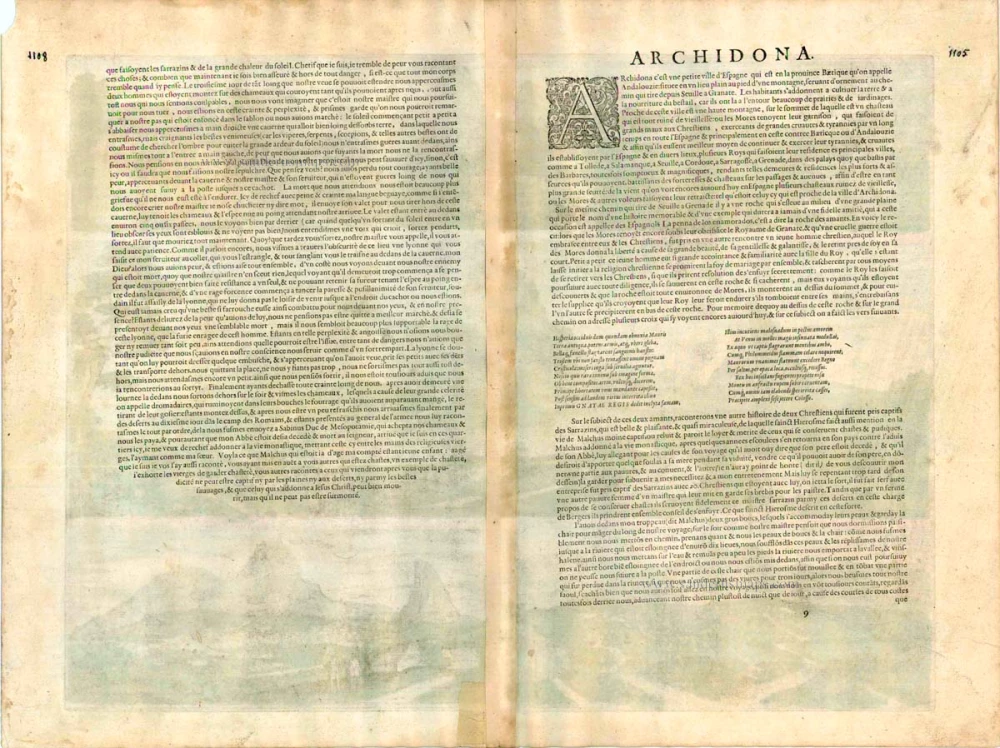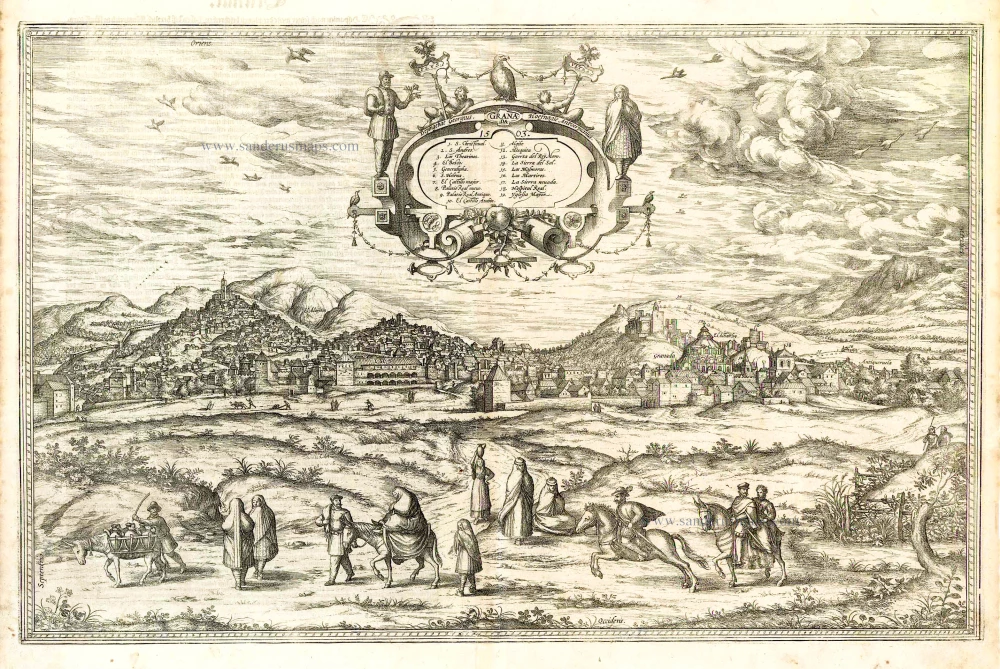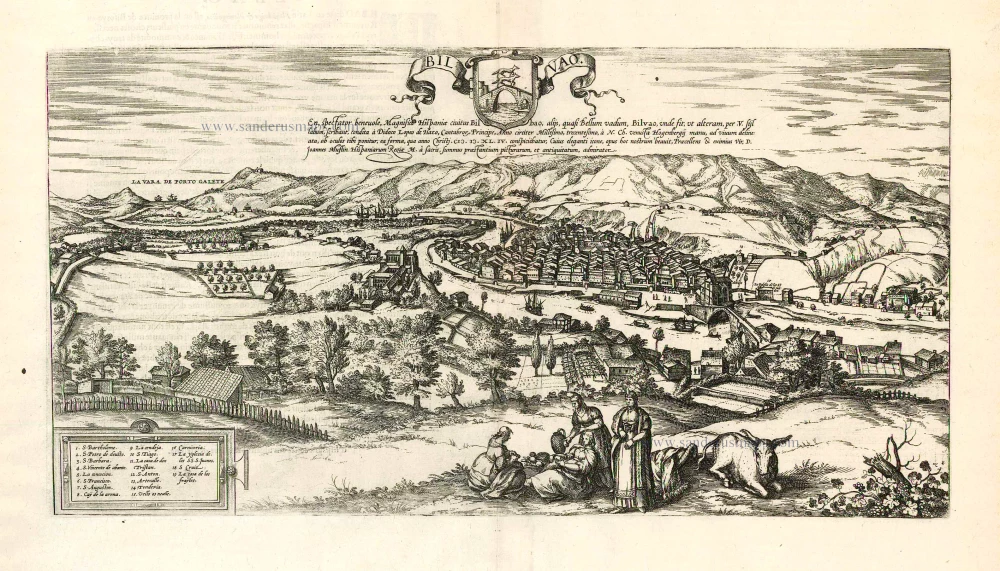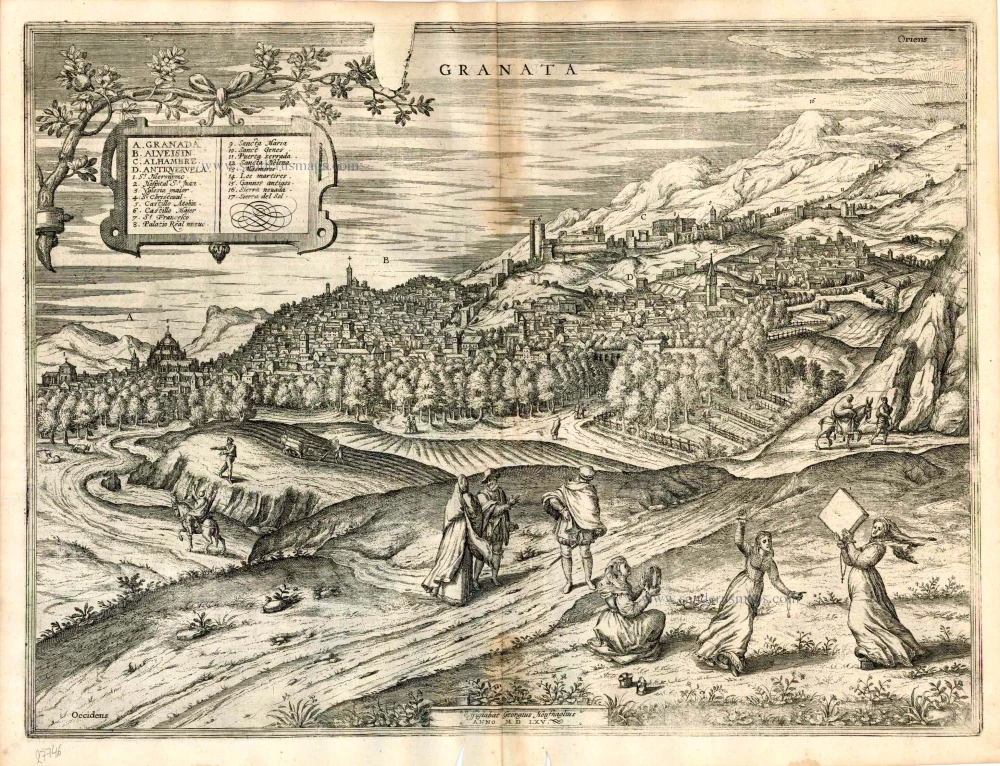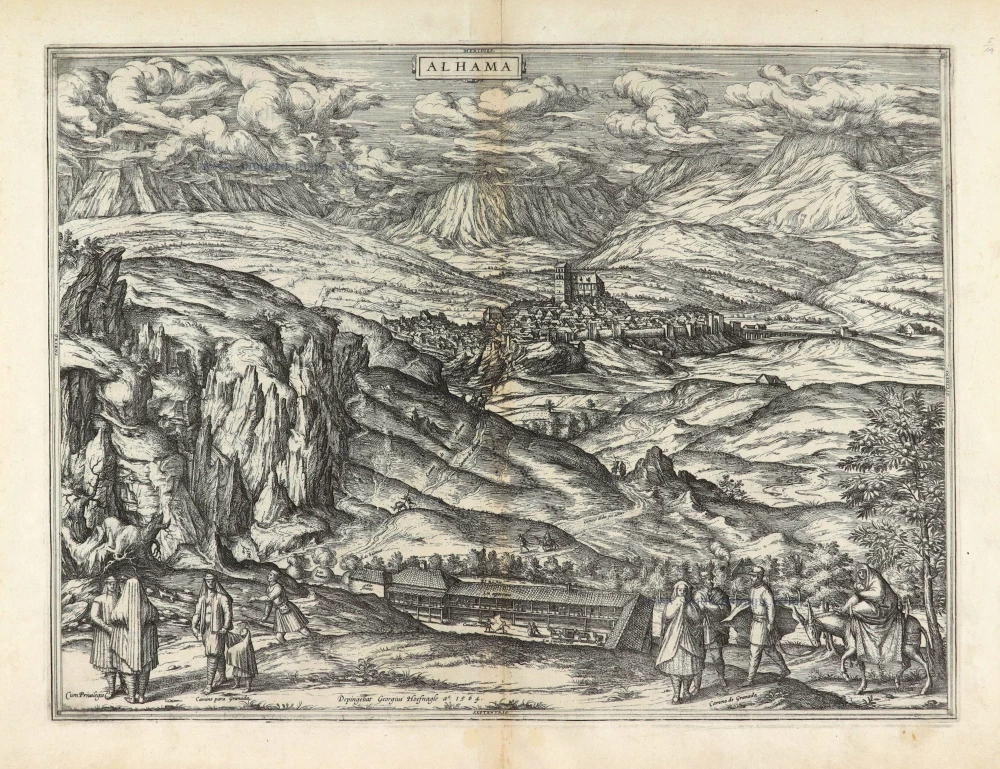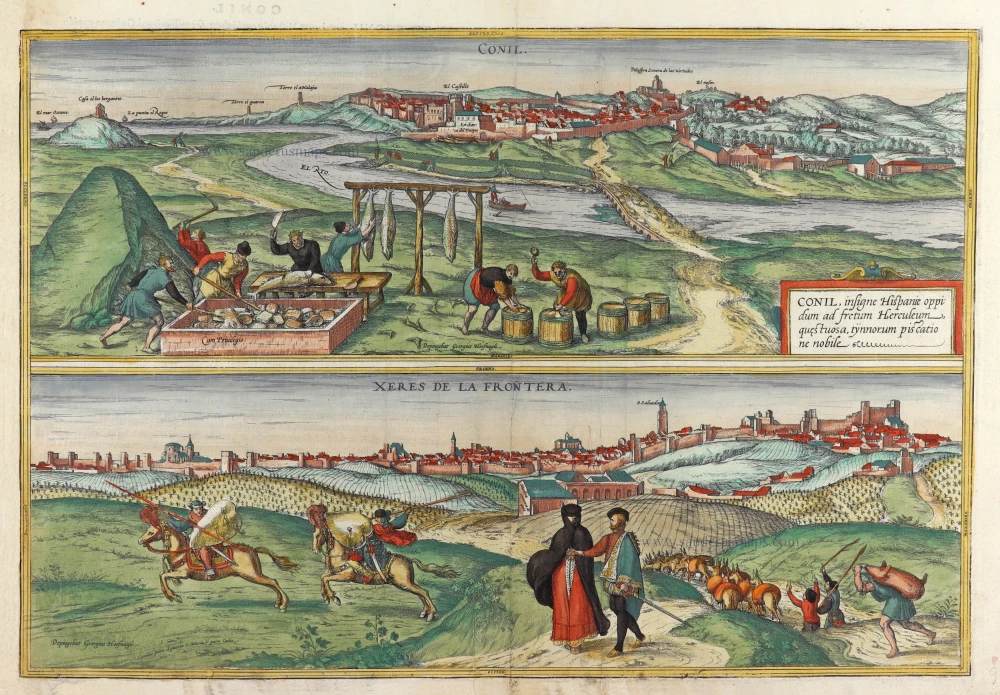Archidona and La Peña de los Enamorados by Braun & Hogenberg c. 1610
COMMENTARY BY BRAUN: "Archidona is a small town in the Spanish province of Baetica. On the mountain immediately beside the town lies an old ruined castle that the Moors occupied to the distinct disadvantage of the Christians, and from where they plagued the whole of Spain, and Baetica in particular, beyond all measure for many years to defend their tyranny. Along the otherwise level road from Seville to Granada can be seen a tall rock that has acquired its name from the eternal example of love and is called by Spaniards La Peña de los Enamorados, which means the boulder or rock of the lovers."
Archidona, which lies north of Malaga between Antequera and Loja, and the Peña de los Enamorados (Lovers' Rock), situated between Archidona and Antequera, are presented in this plate in four views. Rising above the Guadalhorce River in the upper view is the rock formation known as the Peña de los Enamorados, from which - according to legend - a Christian knight and the daughter of a Saracen king are alleged to have flung themselves in despair; included as staffage on the left is a pair of smitten lovers. The view is repeated lower left from a greater distance. The middle illustration shows Archidona, overshadowed by the ruins of the Moorish castle. The fortified complex traces its origins back to the Phoenicians; it was later enlarged by the Carthaginians and finally by the Romans. In the 9th century, the Moors built their castle on the ruins of the Roman fortresses; the Christians did not take it until as late as 1462. This motif, too, is repeated lower right. The two men walking away from the viewer are probably Hoefnagel and Maleparte.
La Penna de los Enamorados - Archidona
Item Number: 16692 Authenticity Guarantee
Category: Antique maps > Europe > Spain and Portugal
Four views on one sheet: two of the mountain "La Peña de los Enamorados" and two of the na and La Peña de los Enamorados by Braun & Hogenberg.
Title: La Penna de los Enamorados - Archidona
1564
Effigiabat Georgius Houfnaglius.
Date of the first edition: 1596.
Date of this map: c. 1610.
Date on map: 1564.
Copper engraving, printed on paper.
Image size: 358 x 477mm (14 x 18¾ inches).
Sheet size: 410 x 550mm (16¼ x 21¾ inches).
Verso: French text.
Condition: Original coloured, excellent.
Condition Rating: .
From: Théâtre des Principales Villes de tout l'Univers. Tome 5. c. 1610.
COMMENTARY BY BRAUN: "Archidona is a small town in the Spanish province of Baetica. On the mountain immediately beside the town lies an old ruined castle that the Moors occupied to the distinct disadvantage of the Christians, and from where they plagued the whole of Spain, and Baetica in particular, beyond all measure for many years to defend their tyranny. Along the otherwise level road from Seville to Granada can be seen a tall rock that has acquired its name from the eternal example of love and is called by Spaniards La Peña de los Enamorados, which means the boulder or rock of the lovers."
Archidona, which lies north of Malaga between Antequera and Loja, and the Peña de los Enamorados (Lovers' Rock), situated between Archidona and Antequera, are presented in this plate in four views. Rising above the Guadalhorce River in the upper view is the rock formation known as the Peña de los Enamorados, from which - according to legend - a Christian knight and the daughter of a Saracen king are alleged to have flung themselves in despair; included as staffage on the left is a pair of smitten lovers. The view is repeated lower left from a greater distance. The middle illustration shows Archidona, overshadowed by the ruins of the Moorish castle. The fortified complex traces its origins back to the Phoenicians; it was later enlarged by the Carthaginians and finally by the Romans. In the 9th century, the Moors built their castle on the ruins of the Roman fortresses; the Christians did not take it until as late as 1462. This motif, too, is repeated lower right. The two men walking away from the viewer are probably Hoefnagel and Maleparte.


